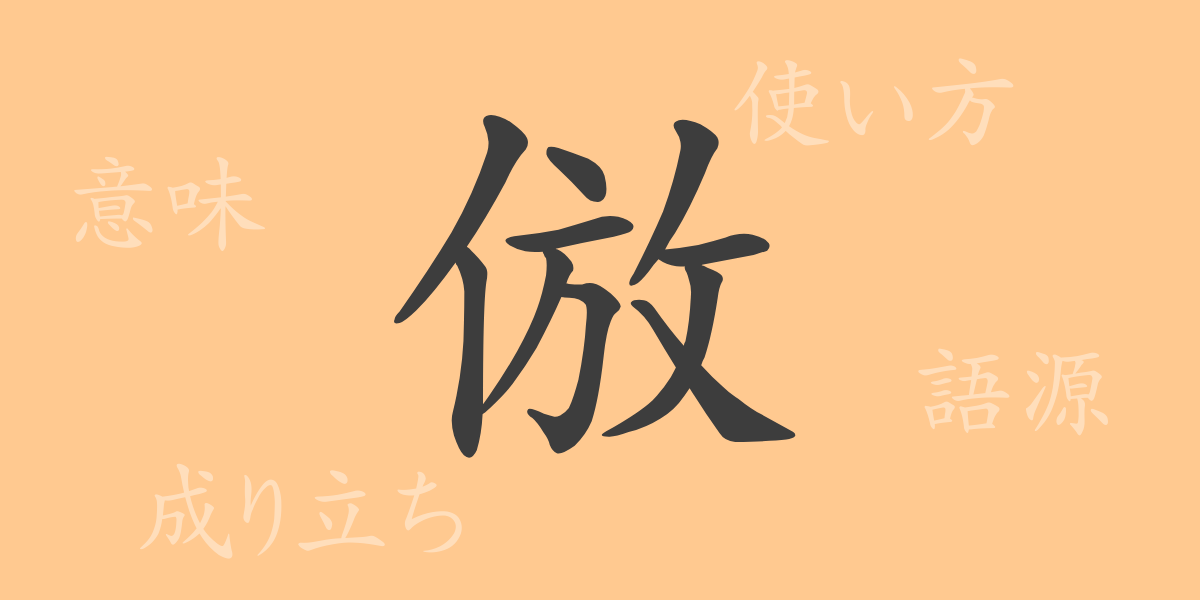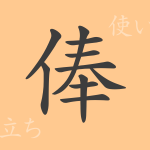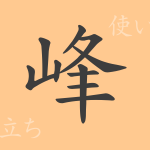Language is a mirror that reflects culture, and kanji (Chinese characters) are the threads that weave the art of meaning and form within this complex tapestry. The commonly used Japanese kanji (かんじ) “倣 (ほう, Hō)” is a character that reveals a glimpse into the rich history and culture of Japan. In this article, we will delve deeply into the world of “倣 (ほう, Hō),” unraveling its origins, meanings, uses, and even the idioms and proverbs in which it is commonly found. Join us as we explore the full scope of this fascinating kanji (かんじ).
The Origins (語源, Gogen) of 倣 (ほう, Hō)
The kanji (かんじ) “倣 (ほう, Hō)” is an ideogram that was formed in ancient China. Its origin lies in the character “仿 (ほう, Hō),” which depicts a person imitating something. By adding the radical “亻 (にんべん, Ninben),” which signifies a person, the meaning evolved to “a person imitating.” Through this morphological evolution, “倣 (ほう, Hō)” has come to signify imitation or following, and it has been used throughout history in this context.
The Meaning and Usage of 倣 (ほう, Hō)
“倣 (ほう, Hō)” means “to imitate” or “to follow,” referring to the act of incorporating the actions or works of others as one’s own. It is often used in contexts where one imitates behaviors or attitudes, especially in the fields of art and technology, where it denotes learning from the styles of predecessors.
Reading, Stroke Count, and Radical of 倣 (ほう, Hō)
The basic information about the kanji (かんじ) “倣 (ほう, Hō)” is as follows:
- Reading: The on’yomi (音読み, Chinese reading) is “ホウ (ほう, Hō),” and it does not have a specific kun’yomi (訓読み, Japanese reading).
- Stroke Count: It has a total of 14 strokes.
- Radical: The radical is 亻 (にんべん, Ninben).
Idioms, Proverbs, and Phrases Using 倣 (ほう, Hō)
Idioms, proverbs, and phrases that include “倣 (ほう, Hō)” are key to understanding its deeper meanings and uses. For example, the idiom “倣古 (ほうこ, Hōko)” means “to imitate the old,” often used in artistic contexts. Additionally, the word “模倣 (もほう, Mohō)” means “to mimic,” and is widely used in everyday language.
Conclusion on 倣 (ほう, Hō)
The kanji (かんじ) “倣 (ほう, Hō)” signifies imitation, learning, and the path to creation. From its origins to its meanings, usages, and everyday applications, this kanji (かんじ) teaches us much. As we carry forward our culture and traditions while creating new values, the spirit of “倣 (ほう, Hō)” should continue to be cherished.

























